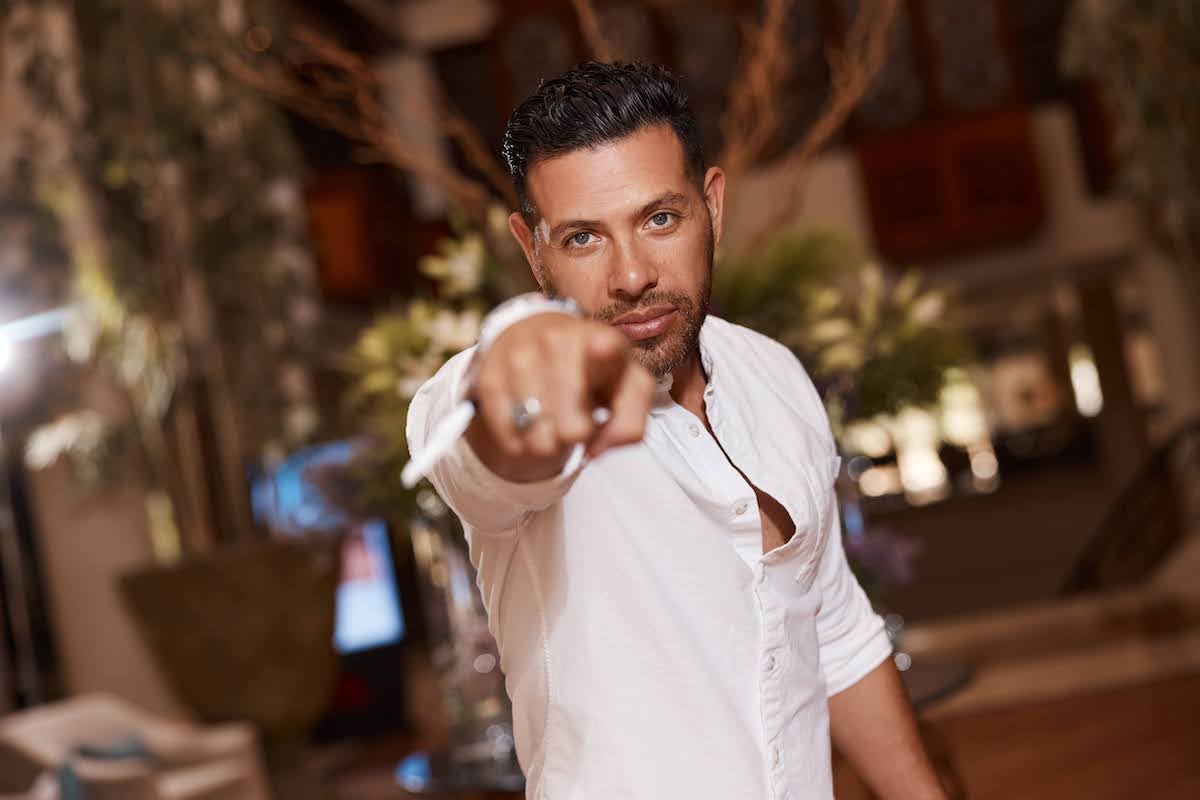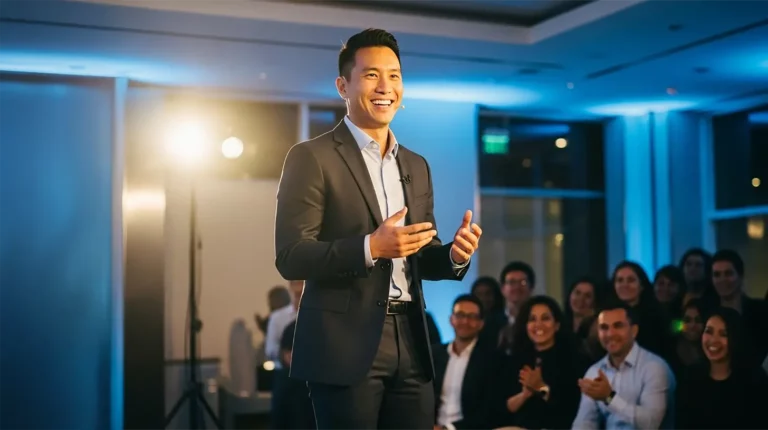Personal branding, to quote Amazon’s founder Jeff Bezos, “is what other people say about you when you’re not in the room.” It’s food for thought, really—what are people saying about you behind your back? And what kind of impression are you leaving so that they’ll see you as someone they can benefit from rather than not?
That’s really what branding for businesses and corporations is about. But can personal branding follow the same formula?
That’s the mission of Gerard Adams, The Millennial Mentor™ and trainer of Mindvalley’s The Science of Personal Branding Quest—to put the spotlight on this very topic and help people leverage their passions to figure out who they truly are and why they’re doing what they’re doing.
Branding yourself is much, much more than just putting your name out there. When you learn the ins and outs of it, you may just find yourself in the same league as Gerard himself.
What is personal branding?
Your name, logo, tagline, design, or other features—that’s one aspect of personal branding. The other is about creating your image, reputation, character, ideals, and name. Essentially, who you are as an individual and what you stand for.
A personal brand is how the world sees you and it’s a representation of how you truly see yourself.
— Gerard Adams, trainer of Mindvalley’s The Science of Personal Branding Quest
It’s the telling of your story, as you live and breathe it, and how you’re different from other people. And when done well, you can integrate your personal branding with your business, creating a truly authentic connection with your community.
Why is branding yourself important?
Like companies, personal branding gives you credibility, trust, and rapport. That contributes to a following and loyalty to you. Essentially, it’s your social currency.
In fact, a 2019 study looked at the impact of personal branding on career success. Its findings confirm that defining your brand leads to greater career satisfaction, bringing about the likelihood of gaining employment and success in your chosen occupation.
Additionally, Harvard business professor Gerald Zaltman says that 95% of all purchases are made subconsciously. This means that brands, even personal ones, must strive to connect on a deeper soul level with their audience’s hearts versus only appealing to their audience’s rationale and logical mind.
Your customers become more loyal when they feel a strong human connection to your brand, a.k.a you. When this happens, your brand goes from being a “transactional” exchange to a brand they care about and want to purchase from again.
There are, of course, benefits to packaging yourself well. Here are five great ones with personal branding examples:
- Attract opportunities (think: Vishen, founder of Mindvalley)
- Sell more products (think: Jessica Alba and The Honest Company)
- Make you a household name (think: Oprah Winfrey)
- Expose yourself to a larger audience (think: Neil deGrasse Tyson)
- Build trust and rapport (think: Elon Musk)
So before you start selling anything, be it offline or online, you must define exactly what is a personal brand to you, explains Gerard. The reason for this is that “people understand how to respond to who you are before they’re willing to buy what it is that you sell.”

5 rules to brand yourself successfully, according to Gerard Adams
Take it from Gerard, who made the million-dollar mark at the age of 24, you can be a platform people can get behind. However, there are a few things you should keep in mind.
Here are five pieces of advice from Gerard on cultivating a strong personal brand.
1. Take off the masks
A personal branding strategy to look into is authenticity. It might be the buzzword of the century, but there’s a reason it is.
There are three masks that we all wear, according to Gerard—the ones you wear in front of your friends and family, into the outside world, and only to yourself. Removing the masks and discovering who you truly are bolsters your passions, self-belief, and confidence.
When your action aligns with your true nature, finding your purpose is more seamless, and in doing so, it ultimately leads to your happiness and fulfillment. It’s as Tony Robbins, philanthropist and best-selling author, once said, “Success without fulfillment is the ultimate failure.”
Gerard Adams’ tip: “If we can just be ourselves fully, authentically, that’s where real influence is born. That’s where real connection, that’s where real intimacy happens. And that’s where real influence lives because people get to feel that — they feel the energy of you just being yourself.”
2. Find a mentor
Any big-named entrepreneur will tell you the importance of mentorship. Eminem had Dr. Dre. J.J. Abrams had Steven Spielberg. Even Vishen, whose mentors ended up being trainers of Mindvalley’s quests.
Finding a mentor (or mentors) with the same energy frequency as you is important. As you navigate through your journey, you need someone who you can trust and keep it real. Whatever your goals may be, they’ll help guide you, motivate you, and stay accountable.
Gerard Adams’ tip: “I would not be the entrepreneur I am today if I did not have the mentors I had throughout my life that have given me the guidance to get to where I am. Trust me when I tell you it is probably one of the most important variables throughout your life’s journey. You need to find someone that’s going to make that positive influence and impact in your life.”
3. Identify your niche
A niche is an area that you’re particularly interested in and good at. It’s what Gerard calls your “brand superpower.”
“Every one of us has a unique gift,” he says. It could be a knack for baking scrumptious desserts, athleticism, or, in Gerard’s case, telling great stories.
He explains, “Early on, I remember trying to impact a huge demographic and being a jack of all trades,” adding that was a major mistake. Once he started focusing on entrepreneurs who wanted to build a digital business, create a digital footprint, and leverage their personal brand to create a movement of their own, that’s when he really started to see a bigger impact, and his brand started to grow.
Find your brand superpower. It’s a crucial aspect of branding because the reality is, not everyone will be able to relate to your messages, values, and priorities. What your niche does is help you determine your business’s focus so that you can create content that specifically caters to your audience.
Gerard Adams’ tip: “You don’t want to reach everyone. You want to get a little more specific as to who it is you’re looking to serve and what you’re looking to help them with.”
4. Discover your ideal clients
Once you’ve found your niche, it’s a little easier to narrow down your target audience. After all, it will not serve your overall well-being by serving people who don’t like you. So instead, provide for people who can relate to you.
One case to learn from is Nike’s “Just Do It” campaign featuring Colin Kaepernick. The ads drew both negative criticism and positive support. While there was the potential threat that it could all go south, the moral of the story is that Nike understood their ideal clients and upheld its values, which saw its sales spike instead of decline.
Gerard Adams’ tip: “One of the mistakes I want you to avoid is to think that you need to know it all. … You don’t have to think that you have to be this person that needs to be some kind of guru or some big influencer or have a million followers or any of that. No, you just need to be one chapter ahead to be able to guide someone.”
Recommend reading: How to Go Viral: 7 Tips to Boost Your Personal Brand Online
5. Get clear on your promise
People buy things because they want to create a shift into who they want to become. For example, people buy fancy cars to transform into someone who’s perceived as “wealthy,” or they buy makeup to change into a person who’s deemed “beautiful.”
So your promise boils down to your client’s needs and how you will help them get there. Gerard suggests asking yourself the following questions:
- What do your clients need? Maybe they’re looking for a career change or guidance on how to build their own career. Whatever it may be, identify the gap.
- What are you promising them? This is how you show up for your clients and underpins your reputation as a player in the market.
- How much are they willing to pay for it? This is crucial in finding the ideal price point for your personal brand. Look at the maximum your client is willing to pay and the amount you’re comfortable with
When you’re able to get specific on these details, you’ll understand how to write your personal branding statement, and that can help catapult you to recognition.
Gerard Adams’ tip: “Simplicity is key. When you create clear messaging around your offer, knowing exactly what it is and what it’s not, and understanding what that real potent promise is, you’ll be able to convert a lot more clients.”
How to create a personal branding statement
Oftentimes, people jump head first and build a personal website or start selling products. However, Gerard suggests creating your personal branding statement before you get into the logistics of things.
It’s not so much of a vision statement; rather, it’s a short, one-to-three-sentence summary of what you do, why you’re unique, and how you can help potential clients. It’s essentially your elevator pitch to those who don’t want the long-winded version.
3 inspiring personal branding statement examples
- Gerard Adams. “An entrepreneur, investor, philanthropist, connector, storyteller, and leader among leaders who is relentlessly committed to playing my biggest game, changing the world, and helping other leaders like you do the same.”
- Vishen. “I am an entrepreneur, author, and activist on a mission to raise human consciousness.”
- Kristina Mänd-Lakhiani. “I’m an entrepreneur, writer, speaker, mother, philanthropist, everyday-life philosopher, and a woman on her own journey of spiritual growth. I’m also the co-founder of Mindvalley, a global school that delivers transformational education for all ages. My mission is to help you create an extraordinary life by making authenticity the heart of your being.”
How can you start? Well, putting a vision board of words can help. Or a mind map that describes your personal brand — you. It doesn’t need to be super creative; it can follow Gerard’s aforementioned suggestion: clear messaging.
Me, Inc.
Can you see it? You, the brand. It’s exciting, isn’t it?
And who best knows you and your unique gift to the world than you? So if you want to get going on creating your mark in this world, you can learn from Gerard Adams in his The Science of Personal Branding Quest at Mindvalley.
It’s a program for entrepreneurs, professionals, and leaders — for the up-and-coming and those who’ve been in the game for a while. And in it, Gerard will help you…
- Purge your limiting beliefs and replace them with absolute clarity of self and purpose,
- Crystalize your personal superpowers and set the foundations for what you and your business stand for, and
- Present your personal brand through clear and authentic communication across all channels of your business.
If you’re itching with curiosity, you can sample the first few lessons of this Quest for free. All it takes is a sign-up with a Mindvalley account.
It’s important to remember, though, that everyone starts at zero. And as Gerard advises, be patient, stay committed, and enjoy the ride. It’s (and you are) worth it.








